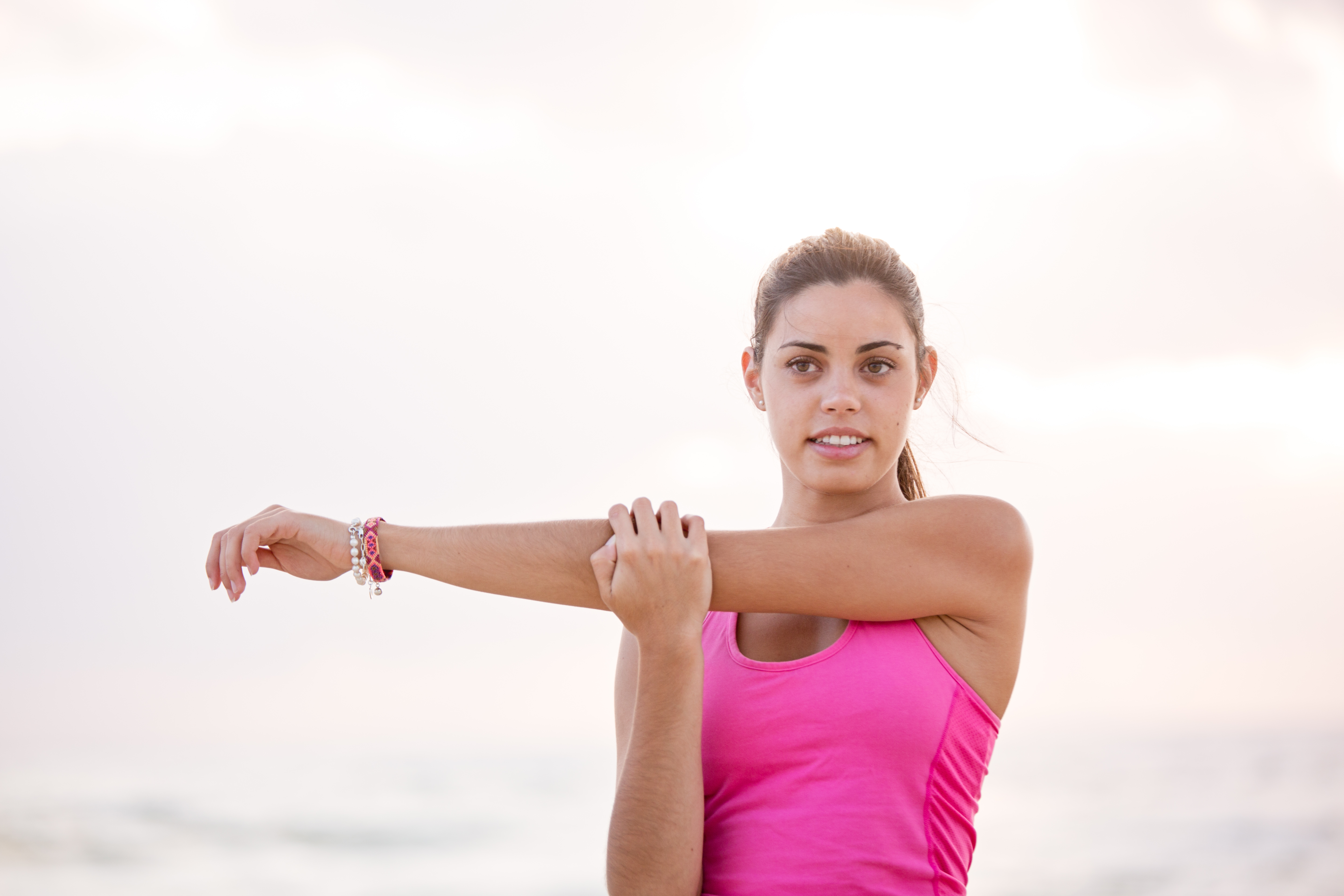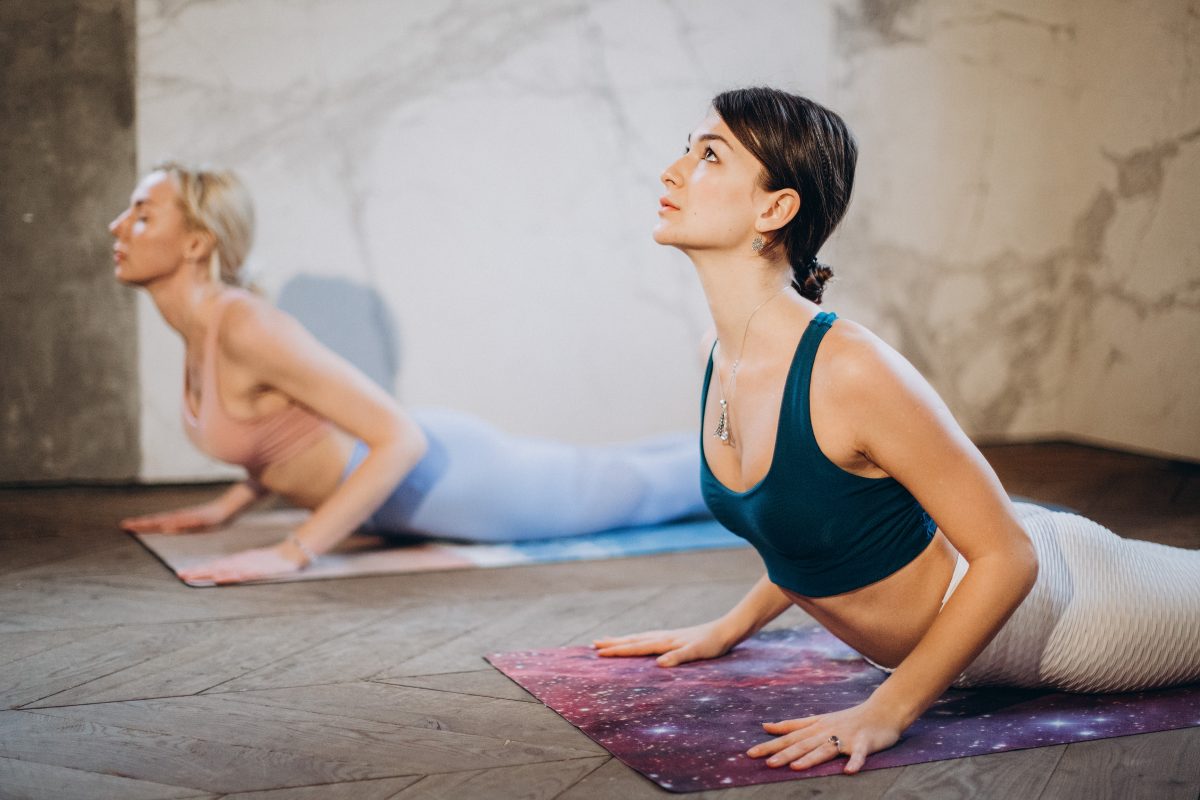If you have had a chance to observe waking up infants you must have noticed how they take their time to look around, yawn and stretch their whole little bodies to get rid of the stiffness. They do it intuitively. As adults, we often are too busy to listen to our bodies or have no time for such exercises as stretching with no obvious impact on our appearance at first sight.
With time our bodies start to lose collagen which is responsible for making our skin, and all the connective tissues in our body less flexible. Researches show that stretching stimulates the increase of collagen in the body and can help us regain flexibility.
Stretching exercises affect not only muscles, connective tissues, and joints but the skin as well. With a continuous stretching routine, the flexibility of skin increases and it becomes stronger and healthier.
What does stretching do

- It improves posture. If muscles are tight, tensed, and therefore shortened the body gains unnatural posture which causes pain in certain parts of the body and limits the range of motions. Stretching helps make muscles longer and leaner and relieve pain or stiffness as well as increase range of motions and overall flexibility.
- It improves balance. The stretched, extended muscles are symmetric and the body becomes well coordinated.
- It helps to avoid injuries. Tightened muscles are more likely to stain or tear. Stretching loosens muscles and they become easily accustomed to changing physical conditions e.g. losing balance due to slippery pavement.
- It improves sports performance. Flexibility attained by stretching is equally important as strength for optimal sports results.
- It helps to relax and calm down. Stretching of muscles helps to reduce tension in them at the same time you will also release all the mental worries while concentrating on the exercise.
“Your body doesn’t hold on to things it doesn’t need, therefore it will try to ditch everything that is not being used. If you don’t use your muscles, they will get smaller. The same goes for flexibility- if you don’t use your range of motion, you’ll lose it..” – Franziska Helfer, Yoga Teacher
Stretching expert Brad Walker emphasizes that the results and use of stretching will be seen after continuous and persistent training as gaining flexibility in our bodies needs time and consistent exercising.
“Remember, stretching is not a quick fix. The benefits of stretching are only attained when flexibility training is applied professionally and diligently over an extended period of time. And there are no magic stretches. Doing one or two stretches every now and again isn’t going to help. And doing the same stretches over and over again isn’t going to help either.” – Brad Walker, strechcoach.com
The best time for stretching is after your workout for calming down or before going to sleep – as a relaxing and mind-clearing activity.
“Sleep, is also the time when your muscles and soft tissues heal, which means your muscles are healing in an elongated, or stretched position.” – Brad Walker, strechcoach.com
To take the most of the stretching you should schedule to exercise daily, hold the stretch in a static position for 15-30 seconds, and your moves while stretching should be slow and gentle to avoid injuries or muscle strain.
Stretch your way
It is advisable to warm the muscles before stretching and you can do your usual workout whether it is jogging, cycling, swimming, or strength exercises for that. You can even do a warm-up by actively dancing to your favorite songs for ten minutes.
You can start with simple stretching exercises for shoulders, neck, back, and legs.
- Shoulders. Stand with your feet shoulder-width apart, tighten buttocks and straighten your spine, shoulders relaxed. Pull both shoulders up, hold, and relax. Pull one shoulder up at the same time pulling another one down, hold, and relax. Push both shoulders down, hold, and relax.
- Neck. Stand with your feet shoulder-width apart, tighten buttocks and straighten your spine, shoulders relaxed. By keeping your shoulders down bend your head towards one shoulder to stretch on the opposite side of the neck. Then bend your head towards another shoulder and stretch the other side of the neck. Pull your chin up and stretch the front of the neck. Push your chin towards your chest and stretch the back of your neck. While pushing your chin towards your chest and checking if your shoulders are not tense, move the chin towards the right shoulder and then gently towards the left shoulder.
- Back. Stand with your feet shoulder-width apart, tighten buttocks and straighten your spine, shoulders relaxed. Take a deep breath and pull your hands up, palms may be held apart or put together as for the prayer.
- Legs. Stand with your feet shoulder-width apart, tighten buttocks and straighten your spine, shoulders relaxed. Bend down and touch your toes while straightening your back and stretching hamstrings and knees.
When you feel comfortable with the first exercises include more difficult ones into your stretching routine. You can try a few exercises for the same muscle group and pick the one which suits you most at the moment. Then you will learn to do a variety of exercises and change them over your exercising sessions.
It is also quite handy to group exercises that can be performed while standing, then sitting, lying on your back, and so on.
You can ask for the help of a professional physiotherapist to show you the basics of the stretching or you can find information with examples of how to perform stretching correctly online.
Stretching can be treated as a time for yourself, for concentration on the given moment and your body. You can use it for focusing on breathing and clearing your mind.
You can also listen to calming music or sounds of waves or birds, visualize pleasant memories and moments of your life. It helps to stop the ever-spinning circle of thoughts and just be in the moment with yourself for a while.
Mindful approach when exercising is needed to perform the exercises correctly and avoid unnecessary tensions in your body. You should feel pleasant tension only in the areas you are stretching and relax all the other parts of your body which are not involved in the exercise. You should constantly check on yourself if you are not tensing your body and try to relax unnecessary strained body parts. Observe your shoulders if they are not pulled up and jaws if they are not clenched all the time as these are the parts that tend to be stressed the most. You should not feel pain and too much uncomfortable tension. If you do – stop and try to do the exercise again in a more correct way or avoid it for some time.
A way to have a healthy body and mind

Stretching provides you with the freedom of exercising on your own. It is a great way to build your program of flexibility workouts and have a few different sets of exercises to achieve the best results and avoid monotonous and boring training. It is great that you can do your stretching wherever you choose to – at home, in the forest, in the park, on the beach, in the hotel room – all you need is a yoga mat and your favorite music which turns on the exercising mode in your brain. And you all set for a valuable and refreshing workout.
Stretching may be your way of meditation – being in the moment with yourself and feeling your body can benefit you in finding inner-balance and having a flexible body.


